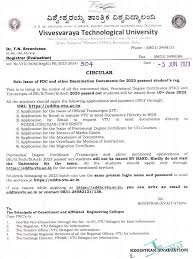The Importance of a Permaculture Design Certificate (PDC)
Obtaining a Permaculture Design Certificate (PDC) is a significant achievement for individuals interested in sustainable living, ecological design, and regenerative agriculture. A PDC is a comprehensive course that provides participants with the knowledge and skills to design resilient and harmonious systems that work with nature.
One of the key benefits of earning a PDC is gaining a deep understanding of permaculture principles and practices. Participants learn how to observe and mimic natural patterns, optimize resource use, promote biodiversity, and create productive landscapes that benefit both people and the environment.
Having a PDC not only enhances one’s knowledge but also opens up opportunities for career advancement in various fields such as sustainable agriculture, landscape design, urban planning, environmental education, and community development. Employers often value individuals with PDCs for their holistic approach to problem-solving and their ability to design innovative solutions that prioritize sustainability.
Furthermore, holding a PDC can connect individuals to a global network of like-minded professionals and enthusiasts. By joining the larger permaculture community, certificate holders can exchange ideas, collaborate on projects, attend workshops and conferences, and stay informed about the latest developments in sustainable practices.
In conclusion, obtaining a Permaculture Design Certificate is not only an educational milestone but also a gateway to a world of opportunities for personal growth, professional development, and positive impact on the planet. Whether you are looking to deepen your understanding of permaculture or pursue a career in sustainability, earning a PDC can be a transformative experience that empowers you to create positive change in your life and the world around you.
Understanding PDC Certification: Key FAQs on Permaculture Design Courses
- What do you learn in a permaculture design course?
- What is a PDC course?
- How long does it take to learn permaculture?
- What is a PDC certification?
What do you learn in a permaculture design course?
In a permaculture design course, participants learn a wide range of valuable skills and concepts essential for creating sustainable and regenerative systems. The curriculum typically covers topics such as permaculture ethics and principles, site analysis and assessment, water management techniques, soil regeneration methods, plant guilds and food forests, integrated pest management, renewable energy systems, social permaculture practices, and design implementation strategies. Through hands-on activities, group projects, case studies, and design exercises, students gain practical experience in applying permaculture principles to real-world scenarios, empowering them to become effective designers capable of creating resilient ecosystems that support both people and the planet.
What is a PDC course?
A Permaculture Design Certificate (PDC) course is a comprehensive educational program that equips participants with the knowledge and skills to design sustainable and regenerative systems based on permaculture principles. During a PDC course, students learn about topics such as ecological design, natural patterns, sustainable agriculture, water management, soil health, energy efficiency, and community resilience. The course typically includes both theoretical learning and hands-on practical activities to help participants understand how to apply permaculture concepts in real-world scenarios. Upon completion of a PDC course, graduates receive a certificate that demonstrates their understanding of permaculture principles and their ability to design holistic solutions that promote harmony between people and the environment.
How long does it take to learn permaculture?
Learning permaculture is a dynamic and ongoing process that varies depending on individual goals, prior knowledge, and level of commitment. While a Permaculture Design Certificate (PDC) course typically lasts around 72 hours spread over a few weeks or weekends, mastering permaculture principles and practices is a lifelong journey. Many people find that they can grasp the basics of permaculture in a PDC course, but truly integrating these principles into their daily lives and projects takes time, practice, and continuous learning. By immersing oneself in hands-on experiences, engaging with the permaculture community, and applying concepts in real-world settings, individuals can deepen their understanding of permaculture over time and make meaningful contributions to sustainable living practices.
What is a PDC certification?
A Permaculture Design Certificate (PDC) certification is a recognized credential awarded to individuals who have successfully completed a comprehensive permaculture design course. This certification signifies that the individual has acquired a solid understanding of permaculture principles, practices, and design methodologies. With a PDC certification, individuals demonstrate their ability to create sustainable and regenerative systems that work in harmony with nature. This credential is highly valued in various fields related to sustainable living, agriculture, landscape design, and community development, as it showcases the holder’s commitment to environmental stewardship and holistic problem-solving.

